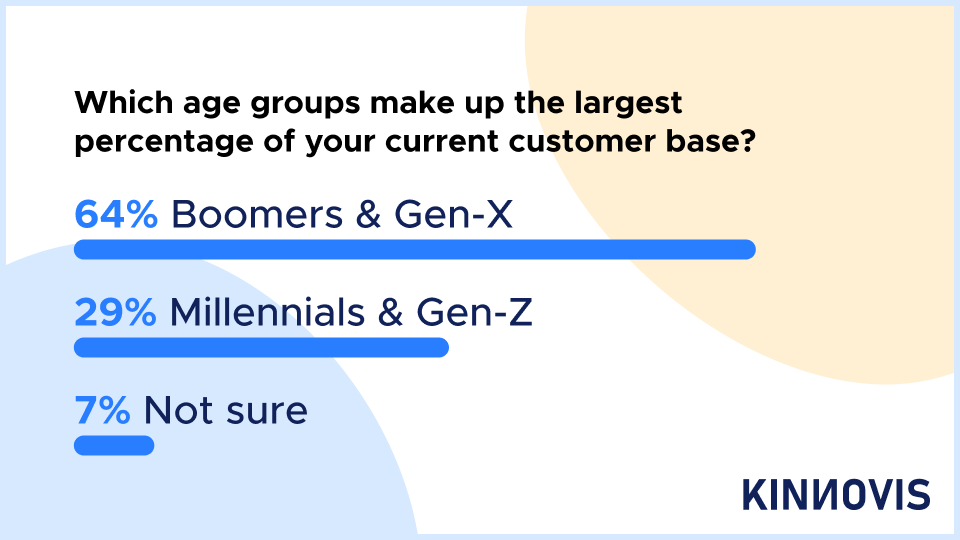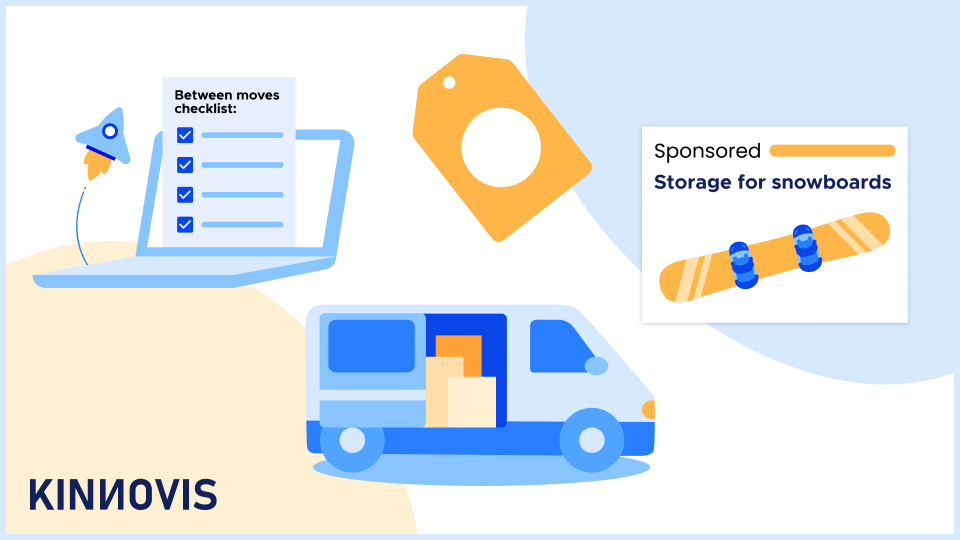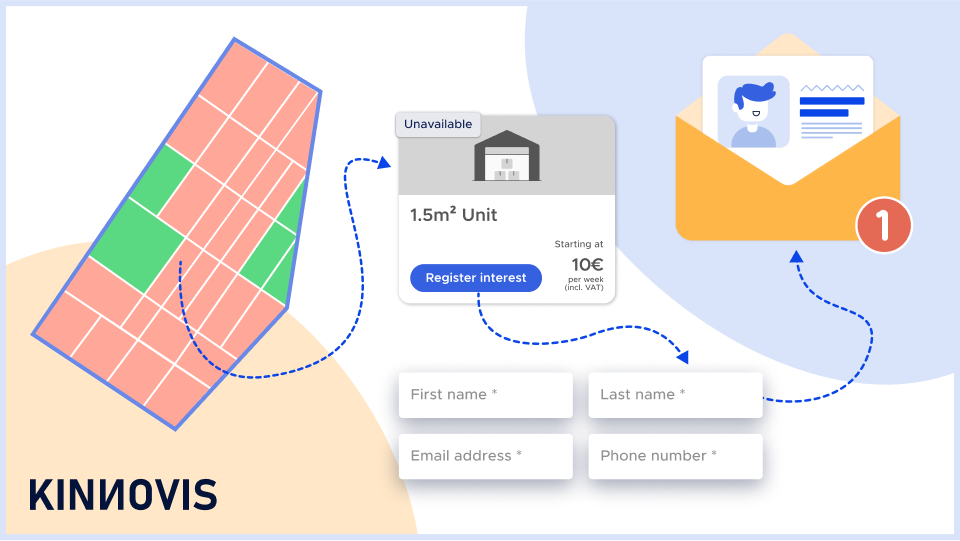
Marketing Self-Storage to Gen-Z
Is the self-storage boom(er) a thing of the past?
In June 2024, David Allan from Apple Self-Storage in Canada noted a significant milestone: for the first time in the company’s history, across their 51 sites, Gen-Z and Millennials make up a larger percentage of their customer base than Boomers. With this shift likely to be reflected across the industry in the coming years, it highlights the growing importance of understanding and marketing self-storage to these younger, tech-savvy generations.
Listen to what David has to say about Apple’s customers on the BBC’s Business Daily podcast:
Who are Gen-Z and how do they compare to previous generations?
Generational spans typically last between 15-20 years and can help to segment audiences based on cultural events, access to technology and social norms that they were exposed to during their formative years. Looking at how Gen-Z is defined, it becomes apparent how they differ from previous generations.
| Generation | Date of Birth | Ages in 2024 | Characteristics and Trends |
|---|---|---|---|
| Boomers | 1946-1964 | 60-78 years old | Experienced the post-WWII economic boom, value hard work and tend to be more traditional in their views. |
| Generation-X | 1965-1980 | 44-59 years old | Known for their independence, scepticism, and resourcefulness. They value work-life balance. |
| Millennials | 1981-1996 | 28-43 years old | Tech-savvy, value experiences over material goods and prioritise social and environmental responsibility. |
| Gen-Z | 1997-2012 | 12-27 years old | Digital natives, highly diverse and value inclusivity & social justice. Adaptable and entrepreneurial. |
Boomers
(1946-1964): 60-78 years old
- Experienced the post-WWII economic boom
- Value hard work
- Tend to be more traditional in their views
Generation X
(1965-1980): 44-59 years old
- Known for their independence, skepticism, and resourcefulness
- Value work-life balance
Millennials
(1981-1996): 28-43 years old
- Tech-savvy
- Value experiences over material goods
- Prioritize social and environmental responsibility
Gen-Z
(1997-2012): 12-27 years old
- Digital natives
- Highly diverse
- Value inclusivity and social justice
- Adaptable and entrepreneurial
How does this compare with the UK self-storage market?
A recent survey put to the UK’s Young Storage Network showed that operators have already seen a shift in their customers’ ages from previous years. When asked which age groups make up the largest percentage of their customer base today:
- 64% said Boomers & Gen-X
- 29% said Millennials & Gen-Z
- 7% said they weren’t sure
This means almost 1 in 3 self-storage businesses believe they’re already catering primarily to younger generations.

Where to find which generations you should be targeting
As an indication of which age groups are either interested in or already using your self-storage business, you can use the data tracked from your website. If you have Google Analytics set up, it can provide reliable data on the ages of people visiting your website.
Navigate to the “Reports” section, then to “User,” and finally to “User attributes” where you will find “Demographic details.” By default, it will show a breakdown of website visits by the “City” users are located in, but you can change this within the dropdown to display “Age” instead.

As you can see in the graph above, there’s also an option to display results as a time comparison and observe any changes in the age brackets of people coming to your website. Gen-Z and Millennials might not be your main audience right now, but have things changed over the last year? If you have your website’s conversion tracking set up too, you can identify which age groups are booking the most self-storage units from you.
One important thing to note is that Google’s data can only be accurate to a certain degree and this report should only be viewed as indicative. Additionally, some age groups may be more active online than others, which may skew your results slightly. If you know the percentage of your customers booking online versus through offline channels (like phone calls or walk-ins), incorporating that information would also give you a fuller picture.
Why younger generations are using self-storage
If you’ve taken a look at your numbers and believe that you need to actively market your self-storage business to Millennials and Gen-Z, then the first step is to look at some of the reasons why these generations could need to place items into storage.
To support lifestyle activities
As Helen Ng and David Allan discussed on the BBC’s podcast, the trend of urbanisation leading to densely populated towns and cities has meant younger people can no longer afford the space at home that previous generations could. For these generations, self-storage has stepped in to ensure they can still pursue personal hobbies and life experiences and maintain a high quality of life. As examples, drum kits, snowboards and crafting tools are some items which are valued highly but are unlikely to fit in a small home without taking up space and becoming a burden.
For temporary storage while travelling overseas
As a temporary home for their valuables, while travelling overseas, self-storage units can be a highly effective solution for Gen-Z and Millennials, who are increasingly engaging in working remotely from abroad. While living this nomadic lifestyle, they may choose to cancel their rental agreements, sublet or rent out a property they own. Self-storage units offer a safe and convenient place to store their belongings while they are away.
As a reason to use self-storage, it’s likely not a million miles from what your current customers use your units for today, but the items they’re choosing to store may differ from your typical customer in terms of emotional and monetary value. Therefore, you should consider the messaging you use when targeting this demographic.
To launch their small business or start-up
Self-storage facilities offer a versatile and cost-effective solution for small businesses, particularly those in the early stages of development. When equipped with secure access, wifi, lighting and an electricity supply, these units provide a conducive environment for entrepreneurs. One of the primary advantages is the ability to scale operations in line with their business’s growth. Unlike traditional office spaces, which often require a significant commitment and can be difficult to expand without relocating, self-storage units offer the flexibility to simply rent additional units as the business grows. This is also perfect for companies that experience seasonal fluctuations or are rapidly expanding.
Depending on the nature of their business, inventory management and order fulfilment can also take place from within the secure environment of the self-storage facility.
Marketing your self-storage business for these use-cases
With three strong examples of why Millennials and Gen-Z could need self-storage, the next step is to ensure they’re aware of how your business can help them.
Be precise with your targeting
We know from the most recent UK industry report that 57% of the population isn’t sure what self-storage is1. If over half of your target audience doesn’t know about the service that you offer, when it comes to the point where they need to rent a storage unit, they’re unlikely to use terms like ‘self-storage near me’.
Therefore, if you’re using paid digital advertising, like Google or Bing ads, then it’s worth putting in the time to come up with a list of keywords for individual items that your target audience might be looking to store. Keywords like ‘snowboard storage [city]’, ‘temporary piano storage’ or ‘storage for sewing machines in [location]’ will certainly have a lower search volume than more generic storage-related phrases, but you could have a separate, supplementary campaign running for these kinds of searches. By focusing on individual items that resonate with their lifestyles and interests, you can create more relevant and compelling ad campaigns.
1 UK Annual Industry Report 2024
Create bespoke landing pages
For targeting those travelling overseas, depending on the level of marketing you’re doing today, there may not be too much to change, it may just be the order of the information you provide and how it’s provided that needs altering. These customers are going to want to hear more about security and reassurances about the safety of their items as they’re not going to be able to pop into the facility at the drop of a hat. Leading with how you offer 24/7 access will also likely not resonate.
The most direct approach to getting the right message to this audience would be to create a new landing page on your website, specifically for storing while travelling. On the page, you can include:
- Any reviews or testimonials you have from previous customers who have stored with you while travelling abroad.
- If you have smart entry installed, how they can grant local friends and family with emergency access to their unit.
- Alternatively, if you use traditional locks, what your lock cut procedure is when they do return and have likely lost their keys!
- Storage tips for protecting items in long-term storage from mould would also highlight your knowledge of their needs and commitment to looking after their items.
- Reassurances of your fire regulations and building security. Any badges or certification logos should be added.
- Lastly, add information on your protection plans for their peace of mind.
Generate a sense of community
While it’s uncommon for self-storage operators to promote their customers speaking with each other, if you do decide to target SMEs and start-up businesses, they may see value in feeling part of a community of like-minded people. See Metrognome in Portland, Oregon, who offer 24/7 storage and rehearsal space to musicians in the local area. As part of their service, they have a dedicated community manager for each facility to help support up-and-coming artists. It also gives those performers a platform to share goals and obstacles with other Metrognome customers.
It’s worth noting as well that Metrognome doesn’t mention the phrase ‘self-storage’ anywhere on their website. Instead, they refer to the spaces they offer as ‘practice rooms’ – actively encouraging their customers to visit the space they’re renting, with taglines such as: saving marriages, one practice room at a time. A gear-shift from the majority of self-storage marketing, which focuses more on the space and freedom at home which only becomes available when items go into storage.
If the concept of continually engaging with your customers on a community level doesn’t sound appealing, there are also additional perks you can offer to businesses which require fewer overheads. Some unique selling points you can bring may not even require any extra effort on your part, such as free wifi, car parking or an on-site mailbox or courier service. You could also set up referral discounts with local firms for hardware like desks, tools and shelving.
Conclusion
By understanding the lifestyle needs and behaviours of the next generation of self-storage consumers, operators can quickly tailor their marketing approaches to attract and retain these customers. Leveraging digital tools like Google Analytics to track demographic data and adjusting your marketing campaigns to focus on specific use-cases will be pivotal, as will adopting the latest technology in the industry to keep up with the customer expectations of Gen-Z. Kinnovis can help with this last part, if you’d like to find out more about our self-storage management software, follow the link below to schedule a free online demo.
More articles
Cost-effective ways to increase brand awareness
17 Jul 2024
Read our top 5, cost-effective tactics to boost brand awareness for your self-storage business.
How our Booking Portal converts customers
06 Jun 2024
Learn about Conversion Rate Optimisation (CRO) and discover why our Booking Portal is a game changer.
Don't let high occupancy rates impact bookings
24 Apr 2024
Once you’re at optimal occupancy at your self-storage facility, online bookings may start to slow down.



